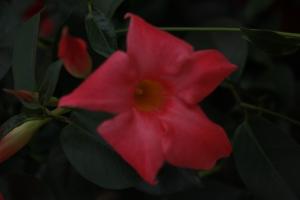Are Bonsai Trees Indoor or Outdoor Plants?
Bonsai trees have become popular among gardening enthusiasts who enjoy the challenge of growing and shaping small trees. They are known for their intricate designs and delicate appearances. However, many people wonder whether bonsai trees are indoor or outdoor plants. The answer to this question may vary depending on the type of bonsai tree, the climate in which it is grown, and the preferences of the gardener.
Indoor Bonsai Trees
Indoor bonsai trees are usually smaller in size than their outdoor counterparts. They are grown in containers that can be easily displayed in homes or offices. Many indoor bonsai trees thrive under bright, indirect light provided by windows or fluorescent lights. In addition, indoor bonsai trees tend to require more attention to their watering schedules and soil conditions, as they are not exposed to natural elements such as rain or wind.
Some popular indoor bonsai trees include the Ficus, Chinese Elm, and Jade plants. These trees are suitable for indoor environments and can be displayed on desks, shelves, and tables. However, it is important to note that indoor bonsai trees may not experience the same growth patterns as outdoor bonsai trees, as they are not exposed to the same environmental factors.
Outdoor Bonsai Trees
Outdoor bonsai trees are usually larger in size and are grown in outdoor containers, such as ceramic pots or wooden planters. These trees require exposure to direct sunlight and natural air circulation to thrive. Outdoor bonsai trees are also more resistant to extreme temperatures and weather conditions, such as high winds or heavy rain.
Some popular outdoor bonsai trees include the Pine, Juniper, and Maple trees. These trees can be displayed on patios, front porches, or in backyards. They require less maintenance than indoor bonsai trees, as they are exposed to natural elements that help regulate their growth patterns.
Conclusion
In conclusion, bonsai trees can be grown indoors or outdoors depending on the type of tree and the preferences of the gardener. Indoor bonsai trees are smaller in size and thrive under bright, indirect light, while outdoor bonsai trees require direct sunlight and air circulation. Whether grown indoors or outdoors, bonsai trees require careful maintenance to ensure their health and longevity. With proper care, bonsai trees can be a beautiful addition to any home or garden.

 how many times do yo...
how many times do yo... how many planted tre...
how many planted tre... how many pine trees ...
how many pine trees ... how many pecan trees...
how many pecan trees... how many plants comp...
how many plants comp... how many plants can ...
how many plants can ... how many plants and ...
how many plants and ... how many pepper plan...
how many pepper plan...




























